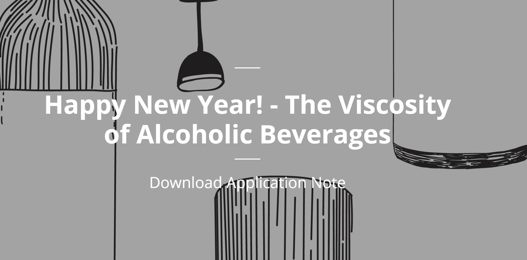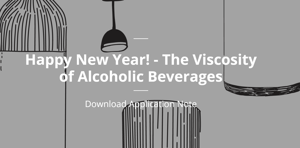Alcoholic beverages are multi-component fluids comprised of water, ethanol, and sugar. Each of these components influences fluid viscosity. So, measuring viscosity can characterize the composition of a beverage as each of these components individually affects the viscosity of the fluid. Knowing the contribution to the fluid viscosity of these parts can improve beverage development. Key criteria can be monitored such as sugar content in the case of dessert wines, cordials, and mixers to alcohol content in the case of liquors like whiskey and grain alcohol. Furthermore, viscosity is known to contribute to the mouthfeel of a beverage, which can improve the oenophile’s experience.
In a recent experiment, we present the rheological properties of commonly enjoyed alcoholic beverages. Our experiment showed that all the beverages tested are Newtonian fluids over the accessible shear rate range. Additionally, we were able to show that the ethanol content of a beverage has a parabolic relationship with the viscosity of a fluid (Belda et al. 2004)1. We demonstrate how this relationship can be used to predict the viscosity of a beverage and explain how deviations from this prediction are indicative of an increase in sugar content. Finally, we measure the contribution of sucrose to the viscosity of sugar-water solutions.
In our application note "Viscosity of Alcoholic Bevarages", viscosity data for alcoholic beverages of various sugar and alcohol percentages was obtained using m-VROC®. The measured viscosity of these commonly consumed beverages was found to be dependent upon the amount of water, alcohol and sugar within the fluid. The viscosity of ethanol water solutions had a parabolic relationship as the amount of ethanol in solution increased. The addition of sugar to alcoholic beverages was also increased the viscosity of these fluids. Shear rate sweeps were performed to confirm Newtonian behavior of alcoholic beverage solutions over the range tested.
Download the free application note to see the full data analysis.

See more food and beverage application notes in our Food and Beverage Applications Library.
1 Belda et al. Viscous synergy of pure monoalcohol mixtures in water and its relation to concentration. Journal of Solution Chemistry. 2004


